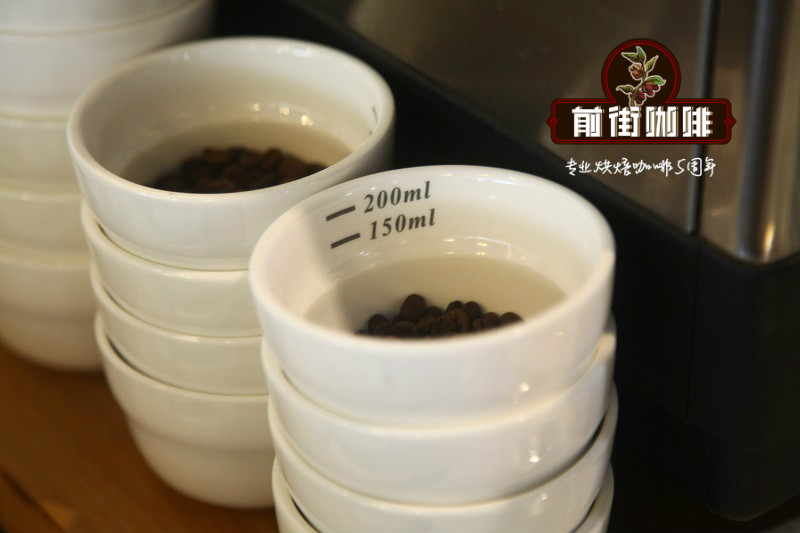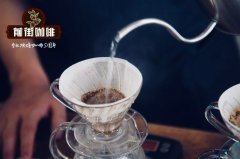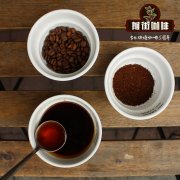Cafetalera Herbazu Vera Saatchi, Laudis-Herba Manor, Orange County, Costa Rica

Professional coffee knowledge exchange More coffee bean information Please pay attention to coffee workshop (Weixin Official Accounts cafe_style)
Cafetalera Herbazu, Valasaki, Kadura, Costa Rica
Costa Rica is the most consistent and best quality coffee in Central America. Coffee production has a very long history. Coffee has been exported to England as early as 1800 in the 19th century. In 1880, the concept of fine coffee had not yet formed. Many high-altitude high-quality coffees (S.H.B) Coffee mixed with flat land is not particularly singled out. Due to the long and narrow terrain, natural conditions such as latitude, altitude, soil, rainfall and temperature greatly vary, resulting in rich coffee varieties. However, in Costa Rica, Robusta varieties are prohibited by law, and only Arabica varieties are allowed. Common coffee varieties include Caturra Cadura, Catuai Cadua, Villa sarchi, Ceisha, Bourbon, Villalobos, In Central America, the most common method of processing coffee beans is water washing, but more and more countries have sun beans and the most popular in recent years, honey processing beans (Miel Process), this trend began in Costa Rica.
Today Costa Rica has responded to the needs of foreign coffee buyers and developed a coffee revolution called "micro mill." The main spirit of micro mill is to hope that every small farm in Costa Rica can have its own micro-processing system, so that the farm can process its own coffee beans according to the simplest, fastest and cheapest processing method. This maximizes the quality of the coffee and makes the farm more profitable, but it also means that small farmers must be responsible for the coffee they produce and process.
Cafetalera Herbazu Manor is a well-known family coffee farmer. They do not help other coffee farmers contract or buy coffee from other farms. They only process their own coffee, indicating that the family has a certain persistence and persistence in coffee beans. The large amount is not the beans directly sought by coffee. This family has grown coffee on Herbazú land for more than 50 years and is a typical real family farm until 2001. Only the descendants of Barrantes Zuñiga's generation decided to build their own washing plant. In 2002, they began to cooperate with Hunter Coffee, a British green bean merchant. Cafetalera Herbazú is now a famous estate. This pure private land has 13 areas with an average area of 2.5 hectares. These 13 small areas are operated by 5 brothers and 8 sisters of Barrantes Zuñiga family.
Property Characteristics: Farms
Farm Name: Herbazú Herbazú
Farmer Farm Owner: Hermanos Barrantes Zuñiga
City: Lourdes de Naranjo
Region: Occidental Valley, Costa Rica
Country: Costa Rica
Coffee growing area: 32.5 hectares
Altitude: 1,500 m
Coffee Characteristics: Coffee characteristics
Variety: Caturra, Villa Sarchí
Villa Sarchí is derived from red bourbon, with bright and delicate citrus acid aromas and lower aromas of raisins and nuts. It is a rare and excellent coffee variety with a high complexity and balance.
Processing System: Fully Washed and dried on ratio
Top Jury Descriptions Judge's comment: Cinnamon 60 seconds from the first blast
aroma/flavor: raisin, vanilla, kernel fruit, jasmine, chamomile, grass, caramel, brown sugar
Acid: grape, tartaric acid, grapefruit acid, clean and refreshing acid
complex complexity and other: smooth round full, good balance, sweet is very good, the aftertaste of vanilla in the mouth
Flavor: sweet feeling accentuates, acidity reduces, mouthfeel is round.
Front Street Recommended Brewing:
Filter cup: Hario V60
Water temperature: 90 degrees
Abrasion: Small Fuji Abrasion 3.5
Cooking method: water-powder ratio 1:15, 15g powder, first injection of 25g water, stewing for 25s, second injection to 120g water, water cut off, wait for the powder bed water to drop to half, then inject water slowly until 225g water, extraction time about 2:00
Analysis: Three-stage brewing, clear coffee before, during and after the flavor. Because V60 has many ribs, the drainage speed is faster, and the extraction time can be prolonged when the water is cut off.
Important Notice :
前街咖啡 FrontStreet Coffee has moved to new addredd:
FrontStreet Coffee Address: 315,Donghua East Road,GuangZhou
Tel:020 38364473
- Prev

Guatemala Vivitenango| La Libertad La& Libertad SHB Cadou
Professional coffee knowledge exchange More coffee bean information, please pay attention to coffee workshop (Weixin Official Accounts cafe_style) Guatemala Vivenango| La Libertad La Libertad SHB Kadura, Kaduai Flavor? Coffee has saved Guatemala's economy over the past century, and it is estimated that there are currently some 125,000 local producers. Coffee is the main export item.
- Next

Santa Ana Volcano in El Salvador | Malacara C Malacala C Farm Honey treated Bean SHB bourbon
Professional coffee knowledge exchange more coffee bean information please follow the coffee workshop (Wechat official account cafe_style) Salvador Santa Ana volcano | Malacara C Malala C farm honey treated beans SHB bourbon flavor? El Salvador is the smallest country in Central America and the most densely populated country. Coffee beans are the main crops in most regions, but don't.
Related
- Detailed explanation of Jadeite planting Land in Panamanian Jadeite Manor introduction to the grading system of Jadeite competitive bidding, Red bid, Green bid and Rose Summer
- Story of Coffee planting in Brenka region of Costa Rica Stonehenge Manor anaerobic heavy honey treatment of flavor mouth
- What's on the barrel of Blue Mountain Coffee beans?
- Can American coffee also pull flowers? How to use hot American style to pull out a good-looking pattern?
- Can you make a cold extract with coffee beans? What is the right proportion for cold-extracted coffee formula?
- Indonesian PWN Gold Mandrine Coffee Origin Features Flavor How to Chong? Mandolin coffee is American.
- A brief introduction to the flavor characteristics of Brazilian yellow bourbon coffee beans
- What is the effect of different water quality on the flavor of cold-extracted coffee? What kind of water is best for brewing coffee?
- Why do you think of Rose Summer whenever you mention Panamanian coffee?
- Introduction to the characteristics of authentic blue mountain coffee bean producing areas? What is the CIB Coffee Authority in Jamaica?

